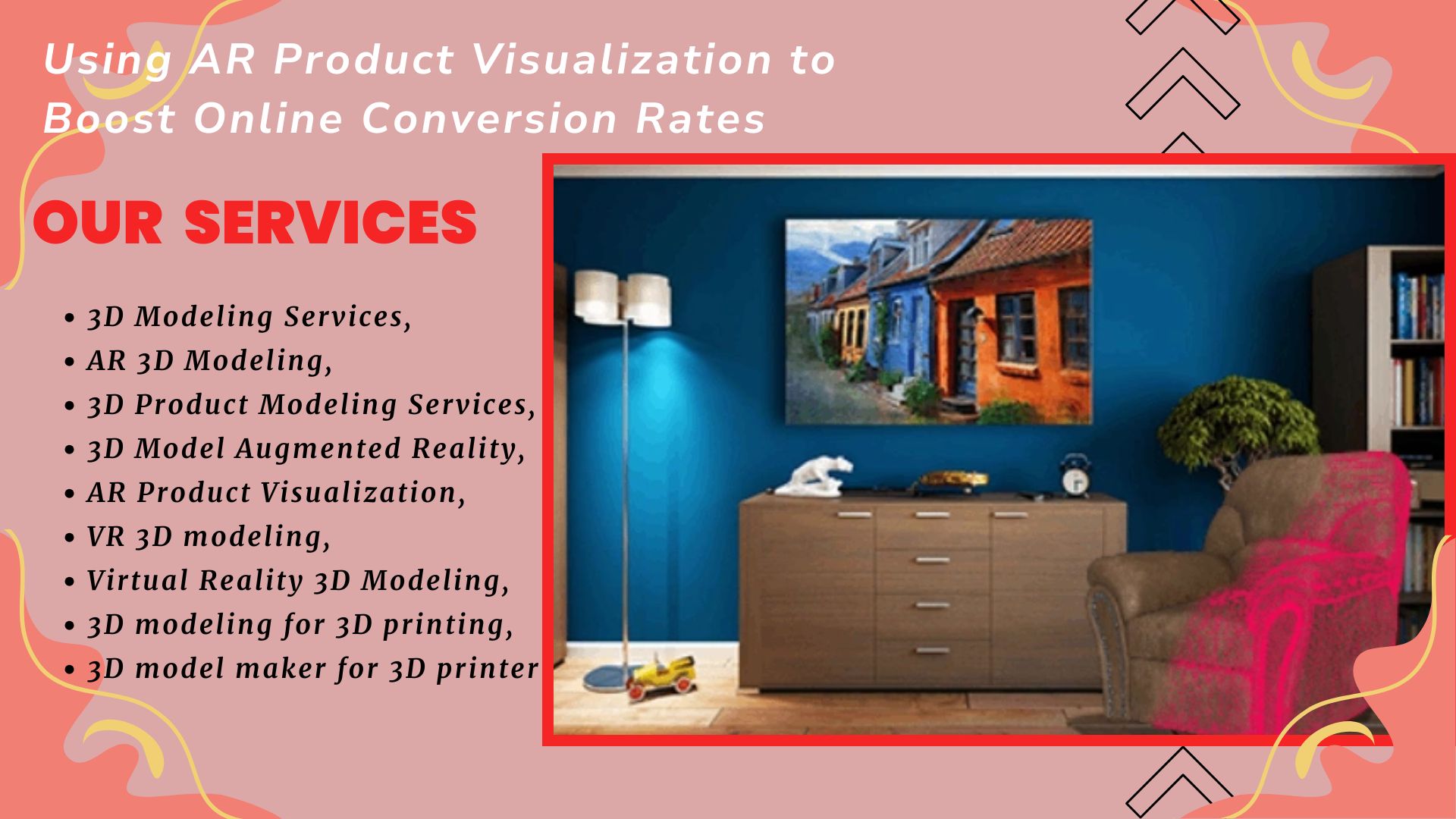Using AR Product Visualization to Boost Online Conversion Rates
Using AR Product Visualization to Boost Online Conversion Rates
Blog Article
AR Product Visualization to Boost Online Conversion
Today's consumers demand immersive, personalized experiences before making a purchase. One of the most effective ways to meet this demand is through AR Product Visualization. With the help of 3D Modeling Services, businesses can now create highly detailed and interactive product visuals using AR 3D Modeling. These realistic representations allow customers to visualize products in their real-world environments, bridging the gap between digital browsing and physical shopping.
What is AR Product Visualization?
AR Product Visualization uses augmented reality (AR) technology to project digital 3D models of products into the user’s physical space using smartphones, tablets, or AR glasses. Unlike traditional 2D product images or videos, AR allows users to interact with products, rotate them, view them from different angles, and even see how they fit into their homes or offices.
This is made possible through 3D product modeling services, which create highly accurate and scalable digital versions of real-world items. These models are optimized for performance and realism, ensuring that users can view lifelike renderings without experiencing lag or low resolution.
The Impact of AR on Online Conversion Rates
Online shoppers often abandon carts due to uncertainty, especially when they can’t physically examine a product. AR product visualization eliminates this doubt by offering a try-before-you-buy experience.
- Enhanced Product Confidence
With 3D Model Augmented Reality, customers can see exactly how a product will look in their environment. Whether it's a couch in their living room or a pair of shoes on their feet, AR removes guesswork, which significantly increases confidence in purchase decisions.
2. Reduction in Return Rates
According to several studies, retailers using AR tools see a drop in return rates. Since customers have a better understanding of the product beforehand, there's a reduced chance of dissatisfaction post-purchase.
3. Improved Engagement
Users spend more time interacting with3D Model Maker for 3D Printer compared to static images or even videos. Increased engagement often translates into better brand recall and higher chances of completing a purchase.
4. Higher Average Order Value (AOV)
AR often encourages upselling and cross-selling. When customers are immersed in a virtual showroom, they’re more likely to explore related products, bundles, or upgrades.
Role of 3D Modeling Services in AR Implementation
This is where professional3D Modeling Services come in. These services create accurate, photorealistic, and AR-compatible models tailored for different platforms like WebAR, mobile apps, or AR glasses.
Whether you're looking for VR 3D Modeling, Virtual Reality 3D Modeling, or 3D Modeling for 3D Printing, skilled 3D model makers can adapt the model specifications accordingly.
Key Steps in AR 3D Modeling:
- Product Scanning or CAD Design – Based on the product, either photogrammetry or CAD-based design is used.
- Mesh Optimization – Ensures lightweight yet detailed models for seamless AR experiences.
- Texturing and Material Mapping – Brings realism through high-quality textures and lighting.
- AR Compatibility Testing – Models are tested on platforms like Apple’s ARKit, Google’s ARCore, and WebXR.
Real-World Examples of AR in E-Commerce
Furniture Retailers
Brands like IKEA and Wayfair have implemented AR apps allowing customers to place furniture items in their home settings before buying. These companies utilize 3D product modeling services to build an extensive AR catalog.
Fashion and Eyewear
From Ray-Ban to copyright, fashion brands are using AR 3D Modeling to let users try on glasses, shoes, and even full outfits. This significantly cuts down the barrier between virtual and real-world try-ons.
Consumer Electronics
Companies use 3D Model Augmented Reality to showcase smartphones, TVs, and appliances, letting users assess size, design, and placement in their rooms.
Integrating AR Product Visualization into Your Online Store
You don’t need to be a tech giant to leverage AR Product Visualization. With a few essential steps, any online store can provide this next-level shopping experience:
- Choose the Right 3D Modeling Partner
Look for providers specializing in 3D Modeling Services and 3D product modeling services. Ensure they understand your brand, industry, and customer expectations.
- Select AR Platforms
Whether it's native mobile apps or WebAR, choose platforms your customers are most comfortable using.
- Integrate with E-Commerce Platforms
Many platforms like Shopify, WooCommerce, and Magento offer plugins or extensions for AR integration.
- Optimize for Mobile
Since most AR interactions happen on mobile, prioritize performance, responsiveness, and usability.
AR vs. VR: What’s the Difference?
VR is perfect for creating entire virtual showrooms or interactive walkthroughs. Still, both technologies rely heavily on high-quality VR 3D Modeling and 3D Modeling for 3D Printing for prototyping, testing, or visualization purposes.
The Future of AR in E-Commerce
The integration of AR is just the beginning. With AI, machine learning, and real-time customization, AR Product Visualization is becoming smarter and more personalized. Soon, users will get custom recommendations with real-time AR previews based on preferences, room dimensions, and even color schemes.
3D Model Maker for 3D Printer are also finding opportunities here. As AR evolves, so does its overlap with 3D printing, allowing customers to visualize and then physically create custom products on demand.
Conclusion
Businesses that embrace AR Product Visualization backed by professional 3D Modeling Services stand to gain a significant competitive edge. Whether it's enhancing user confidence, reducing return rates, or driving higher engagement, AR is proving to be a powerful tool in boosting online conversion rates.
As AR continues to evolve, integrating high-quality 3D product modeling services, AR 3D Modeling, and even VR 3D Modeling into your digital strategy is no longer optional—it’s essential.
 Report this page
Report this page